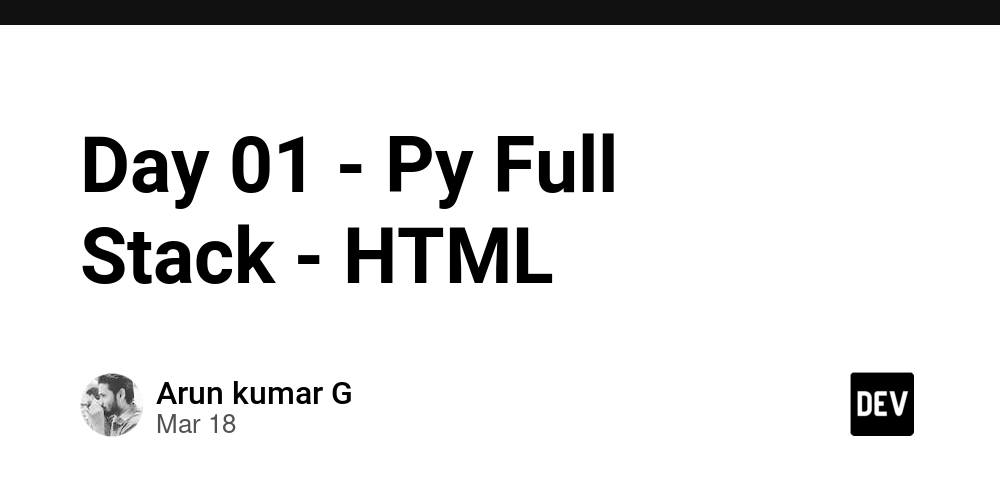How to Write Technical Documentation in 2025: A Step-by-Step Guide
"I wrote this code three months ago, and now I can't understand it at all..." "Where’s the project handover document? Oh, I think I didn’t write it..." "I followed the documentation, but it didn’t work. The key steps weren’t clearly explained!" "The documentation is too long; just looking at the table of contents gives me a headache..." Do these scenarios sound familiar? After years in the tech industry, I’ve come to realize a harsh truth: poor documentation is quietly undermining our careers. New team members take weeks to get up to speed, project handovers feel like solving a puzzle, and maintaining legacy projects is like archaeology. But here’s the good news: writing great documentation isn’t as hard as it seems. In this guide, I’ll walk you through how to create technical documentation that stands out in 2025 and beyond. No fluff—just actionable, practical advice. Table of Contents Why No One Reads Your Documentation Step-by-Step Guide to Great Documentation Structuring Your Docs Enhancing Readability Using Modern Tools Keeping Docs Alive Practical Writing Checklist Future-Proofing for 2025 Final Thoughts Why No One Reads Your Documentation Let’s start by identifying the most common pitfalls that make documentation ineffective: Overloading with jargon: Alienates newcomers and non-experts. Incomplete steps: Leaves users stranded and frustrated. Burying key information: Makes critical details hard to find. Failing to update: Renders documentation unreliable over time. Lack of examples: Fills pages with abstract concepts instead of practical guidance. These issues often stem from common misconceptions about documentation. Let’s debunk them: Common Misconception Actual Situation Correct Approach “Write the code first, then the docs.” You’ll forget the details by then. Write documentation as you develop. “Everyone’s a programmer; they’ll get it.” Newcomers are left confused. Write for your audience, not yourself. “The more detailed, the better.” Readers get overwhelmed and give up. Be concise and highlight key points. “Documentation is a one-time task.” Outdated docs mislead users and waste time. Continuously update and maintain docs. Step-by-Step Guide to Writing Future-Ready Documentation 1. Structure Your Documentation Like a Pro Good documentation is like a well-organized book. Here’s a framework to follow: Project Documentation Framework ├── Project Introduction (What it is, what problem it solves) ├── Quick Start (Get users up and running in 5 minutes) ├── Core Concepts (Key principles and terminology) ├── Detailed Guides (Scenario-based walkthroughs) ├── FAQ (Common pitfalls and solutions) └── Change Log (Version updates and changes) The Importance of a “Quick Start” Section The Quick Start section is the most critical yet often neglected part of your documentation. Your goal? Get users to see results in 5 minutes. Good Quick Start Example: 1. Install dependencies: npm install my-project 2. Modify configuration: // config.js export default { port: 3000 } 3. Start the service: npm start Done! Open http://localhost:3000 to see the result. Bad Quick Start Example: This project uses Node.js with the Express framework, MongoDB for the database, and Redis for caching... [No actionable steps provided.] 2. Enhance Readability with Proven Techniques Use Clear Headings and Subheadings ❌ Bad Example: A wall of text with no structure. ✅ Good Example: ## Configure the Database ### 1. Install MongoDB ### 2. Create the Database ### 3. Set Access Permissions ## Start the Application ### 1. Environment Check ### 2. Start Command Visualize Complex Concepts with Diagrams For example, illustrate data flow like this: [User Request] --> [Load Balancer] --> [Web Server] | v [Cache Layer] | v [Database] Highlight Critical Information ❌ Mixed in the text: “After modifying the configuration file, remember to restart the server.” ✅ Eye-catching Alert: ⚠️ Note: After modifying the configuration, you must restart the server!

"I wrote this code three months ago, and now I can't understand it at all..."
"Where’s the project handover document? Oh, I think I didn’t write it..."
"I followed the documentation, but it didn’t work. The key steps weren’t clearly explained!"
"The documentation is too long; just looking at the table of contents gives me a headache..."
Do these scenarios sound familiar? After years in the tech industry, I’ve come to realize a harsh truth: poor documentation is quietly undermining our careers. New team members take weeks to get up to speed, project handovers feel like solving a puzzle, and maintaining legacy projects is like archaeology.
But here’s the good news: writing great documentation isn’t as hard as it seems. In this guide, I’ll walk you through how to create technical documentation that stands out in 2025 and beyond. No fluff—just actionable, practical advice.
Table of Contents
Why No One Reads Your Documentation
Step-by-Step Guide to Great Documentation
- Structuring Your Docs
- Enhancing Readability
- Using Modern Tools
- Keeping Docs Alive
Practical Writing Checklist
Future-Proofing for 2025
Final Thoughts
Why No One Reads Your Documentation
Let’s start by identifying the most common pitfalls that make documentation ineffective:
Overloading with jargon: Alienates newcomers and non-experts.
Incomplete steps: Leaves users stranded and frustrated.
Burying key information: Makes critical details hard to find.
Failing to update: Renders documentation unreliable over time.
Lack of examples: Fills pages with abstract concepts instead of practical guidance.
These issues often stem from common misconceptions about documentation. Let’s debunk them:
Common Misconception |
Actual Situation |
Correct Approach |
“Write the code first, then the docs.” |
You’ll forget the details by then. |
Write documentation as you develop. |
“Everyone’s a programmer; they’ll get it.” |
Newcomers are left confused. |
Write for your audience, not yourself. |
“The more detailed, the better.” |
Readers get overwhelmed and give up. |
Be concise and highlight key points. |
“Documentation is a one-time task.” |
Outdated docs mislead users and waste time. |
Continuously update and maintain docs. |
Step-by-Step Guide to Writing Future-Ready Documentation
1. Structure Your Documentation Like a Pro
Good documentation is like a well-organized book. Here’s a framework to follow:
Project Documentation Framework
├── Project Introduction (What it is, what problem it solves)
├── Quick Start (Get users up and running in 5 minutes)
├── Core Concepts (Key principles and terminology)
├── Detailed Guides (Scenario-based walkthroughs)
├── FAQ (Common pitfalls and solutions)
└── Change Log (Version updates and changes)
The Importance of a “Quick Start” Section
The Quick Start section is the most critical yet often neglected part of your documentation. Your goal? Get users to see results in 5 minutes.
Good Quick Start Example:
1. Install dependencies:
npm install my-project
2. Modify configuration:
// config.js
export default {
port: 3000
}
3. Start the service:
npm start
Done! Open http://localhost:3000 to see the result.
Bad Quick Start Example:
This project uses Node.js with the Express framework, MongoDB for the database, and Redis for caching...
[No actionable steps provided.]
2. Enhance Readability with Proven Techniques
Use Clear Headings and Subheadings
❌ Bad Example:
A wall of text with no structure.
✅ Good Example:
## Configure the Database
### 1. Install MongoDB
### 2. Create the Database
### 3. Set Access Permissions
## Start the Application
### 1. Environment Check
### 2. Start Command
Visualize Complex Concepts with Diagrams
For example, illustrate data flow like this:
[User Request] --> [Load Balancer] --> [Web Server]
|
v
[Cache Layer]
|
v
[Database]
Highlight Critical Information
❌ Mixed in the text:
“After modifying the configuration file, remember to restart the server.”
✅ Eye-catching Alert:
⚠️ Note: After modifying the configuration, you must restart the server!











































































































































































![[The AI Show Episode 142]: ChatGPT’s New Image Generator, Studio Ghibli Craze and Backlash, Gemini 2.5, OpenAI Academy, 4o Updates, Vibe Marketing & xAI Acquires X](https://www.marketingaiinstitute.com/hubfs/ep%20142%20cover.png)




























































































































![[DEALS] The Premium Learn to Code Certification Bundle (97% off) & Other Deals Up To 98% Off – Offers End Soon!](https://www.javacodegeeks.com/wp-content/uploads/2012/12/jcg-logo.jpg)


![From drop-out to software architect with Jason Lengstorf [Podcast #167]](https://cdn.hashnode.com/res/hashnode/image/upload/v1743796461357/f3d19cd7-e6f5-4d7c-8bfc-eb974bc8da68.png?#)








































































































.png?#)

































_Christophe_Coat_Alamy.jpg?#)
 (1).webp?#)





































































































![Apple Considers Delaying Smart Home Hub Until 2026 [Gurman]](https://www.iclarified.com/images/news/96946/96946/96946-640.jpg)
![iPhone 17 Pro Won't Feature Two-Toned Back [Gurman]](https://www.iclarified.com/images/news/96944/96944/96944-640.jpg)
![Tariffs Threaten Apple's $999 iPhone Price Point in the U.S. [Gurman]](https://www.iclarified.com/images/news/96943/96943/96943-640.jpg)




































































































































